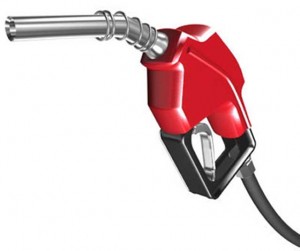
Oil prices have been moving up in recent months, but suffered an unexpected setback, Tuesday.
The good news threatened to turn bad, Tuesday. Driven by improving consumer confidence and a small but measurable improvement in the devastated U.S. housing market, stocks resumed their upward path, with the Dow Jones Industrial average closing the day at 9539. That was a modest 30-point gain, but marked a 404-point jump over the last six days.
The Conference Board, a widely-quoted research firm, announced Tuesday that consumer attitudes have taken an upturn after two monthly declines. In July, the figure stood at a revised 47.4, surging to 54.1 in August – significantly better than observers had expected and the highest point since May. Whether this means anything as the U.S. economy continues to shed jobs, businesses continue to fire people and government deficits reach the stratosphere remains to be seen.
Oil traders were hoping to capture some of that magic, since consumer confidence is one of the strongest indicators of near-term spending. With consumers driving less and factories turning out less, prices collapsed last December, but things may be reversing course. See Ken Zino’s analysis of the oil pricing roller coaster and our failed energy policies by clicking here.
As anyone with a car knows, fuel prices have been steadily increasing this year. The oil industry has been seeing a number of opportunities over the last few weeks, including increased demand in China, to raise prices. And that has nudged prices steadily higher in recent trading. It’s beginning to look like another price spike could be looming.
After gaining more thaneight percent in just five days, market makers were hoping to see oil push past the $75-a barrel mark, but were left disappointed when prices fell back $2.32, to close at $72.02 on the New York Mercantile Exchange. Trading remains at basically record levels for 2009.
“There was a lot of anticipation today that crude would break through to $75,” sparking buying, Andy Lipow, of Lipow Oil Associates, told Agence France Presse. But when that didn’t happen, we saw crude oil prices retreating quite rapidly over the lunch-time hour.”
Crude futures still punched their way to 10-month highs, yesterday, and they could still regain momentum if U.S. petroleum inventories continue to decline. The Department of Energy reported, last week, that crude oil stockpiles fell by an unexpected 8.4 million barrels, and another 1 million decline is being predicted for this week.
Of course, there’s always a balance between the health of the economy and the price of oil, and virtually everyone believes the July 2008 peak of $147-a-barrel worsened what was then seen as only a recession, into a far more severe one. So, a fast run-up at the pump could quickly suppress consumer confidence, restrict driving, lead to cutbacks in manufacturing and a return to the ongoing global Great Recession to near depression levels just as things might be getting better.
Nonetheless, many observers believe $4-a-gallon gas is inevitable, including a newly converted General Motors CEO Fritz Henderson, the company that was forced into bankruptcy when it rolled the dice and lost on a truck based, gas guzzling product line in the U.S. as oil prices soared. On July 10th, at a news conference marking the automaker’s emergence from bankruptcy, Henderson said GM’s planning, going forward, will be based on the assumption of $4 gas, and that means a steady shift in focus away from pickups and traditional sport-utility vehicles, with a new emphasis on high-mileage cars and crossover vehicles. Whether this is to little too late remains to be proven.
Other automakers are basing their plans on similar assumptions. And it should be noted Ford, Chrysler, Nissan and Toyota also lost big on big trucks and sport utility vehicles.
But just how fast prices will now rise to that level remains the big uncertainty.
